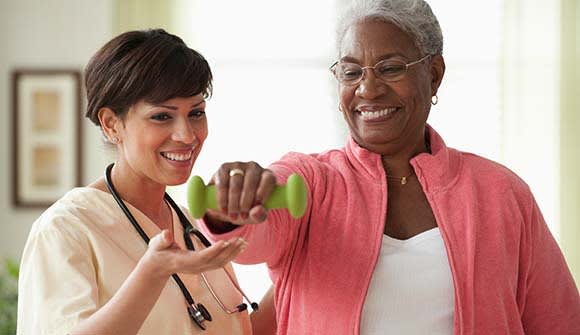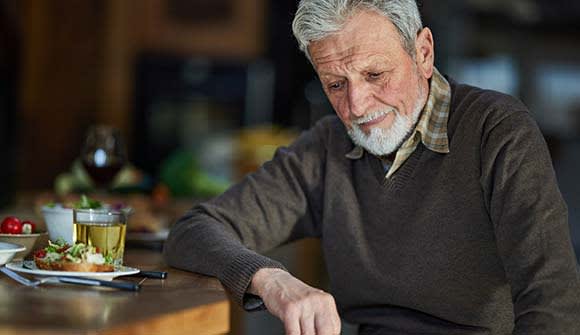Rehabilitation ready
How to tell if you need physical or occupational therapy.
Article Date:

You may have heard friends talk about “therapy” for their hip pain or hand injury, but what does that actually mean? They’re likely receiving rehabilitative care: physical therapy (PT) or occupational therapy (OT). The goal for both is to improve overall functioning and well-being after surgery, accident, injury or illness.
Someone recovering from a knee procedure may need a physical therapist to teach him or her how to move with less pain. The PT work can include stretching, strengthening, stability training and various exercises to improve mobility and function.
An occupational therapist may help someone who has had loss of function, from a stroke, for example, work on daily tasks (also referred to as "occupations") like getting dressed or holding utensils.
Who needs PT?
If you’re experiencing discomfort – like neck or back pain – during activities that were traditionally pain-free, or if you’re having balance difficulties or noticing a sudden loss of strength, PT can help.
“I think of it as a way to educate people on how to move with less pain, greater strength and better balance, whether performing in high-level sports or getting out of a chair after you’ve had a stroke. We're essentially movement experts,” said Paul Provenzano, DPT, lead physical therapist at the Baptist Medical Center Beaches Outpatient Rehabilitation Clinic. “Your first day of therapy, you can expect an assessment to gather information about why you’re there and what physically may be limiting you or contributing to your problem. Then we work up a plan for you, which may consist of anything from performing active exercises to improve strength, stability, balance or range of motion, to passive hands-on treatments like soft tissue or joint mobility work. Each intervention is chosen with the intent of improving your ability to move and function as a human being.”
What’s OT?
In occupational therapy, you work on how to regain or improve performance of activities of daily living (ADLs). This could be anything from cooking a meal to personal grooming or dressing.
“You also do different exercises to prepare for and improve certain tasks. An example is practicing picking up small objects out of a bowl of dry rice to improve gripping, dexterity and fine motor control with your hand and finger muscles. Usually, we make the exercise harder than the actual real-life activity. As we make it more challenging, your skill level improves,” Provenzano said
How do you know if you need PT or OT?
“If you’re having trouble doing things you usually do, and it's impacting your quality of life, it’s time to start looking at rehabilitation services,” Provenzano said. “You can contact your primary care doctor or reach out to a therapist.”
For kids, PT and OT are offered through Wolfson Children’s Rehabilitation. Whether needing therapy for a genetic disorder, an injury or to reach milestones, parents have options and should start by talking to their pediatrician about their concerns.
Aging strong
Doing PT and OT can make a difference for those slowing down.
“We can’t stop aging, but we can help optimize how well you move," Provenzano said. "Most of the time, our older patients just needed a little coaching. We act as teachers and promote independence by showing them that they don’t have to live with pain or fear of falling. Once they learn how to move with better mechanics and do the exercises on their own, they can handle problems when they come up at home.”
If you have questions about physical or occupational therapy, Baptist Rehabilitation is ready to help. Call 904.202.4200 to learn more or make an appointment.



